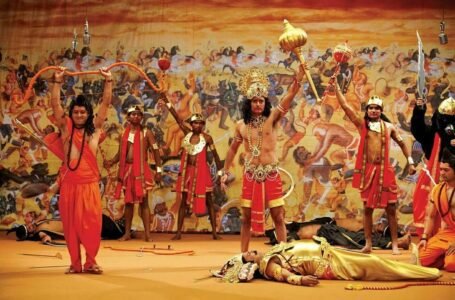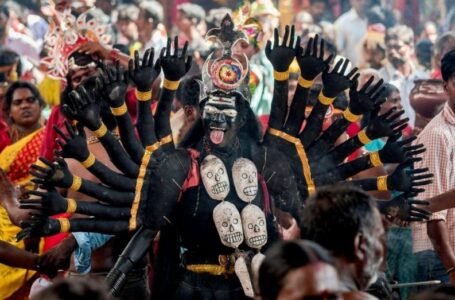Naga Regiment : Tribal Valor in India’s Defence

– Trushti Dand
The Naga Regiment is one of the youngest infantry regiments of the Indian Army, known for its fierce combat ability, unmatched endurance, and the deep martial traditions of the Naga tribes of Nagaland. It was raised on 1 November 1970 at the Kumaon Regimental Centre (KRC), Ranikhet, under the larger framework of the Kumaon Regiment, from which it inherited its traditions, training doctrines, and support systems.
The decision to form the Naga Regiment came in the wake of the Indo-Naga Peace Accord of 1964 and the need to integrate the Naga youth—many of whom came from warrior communities—into the national military structure. The move was both strategic and symbolic: it gave representation to the Nagas in the Indian Army and served to strengthen the integration of Northeast India within the Union.
The regiment’s formation was facilitated by Lt. Gen. R.N. Mahajan, the then Director of Military Operations, and Lt. Gen. R.N. Hoon, who played key roles in recruitment and training. The first Commanding Officer of 1 Naga was Lt. Col. R.N. Mahajan.
The regiment’s motto is “Parakramo Vijayate”, meaning “Valour Triumphs”, and its war cry is the traditional Naga battle chant: “Jai Durga Naga!”. Its insignia features two crossed Naga spears and a traditional dao (war blade), reflecting the rich warrior culture of Nagaland.
Composition and Recruitment
Initially, the regiment drew heavily from the Kumaon Regiment cadre for officers and training. Over time, recruitment focused on 50% Naga youths and the remaining from other hill tribes, such as Garhwalis, Kumaonis, and Gorkhas. Today, the Naga Regiment primarily comprises men from Nagaland and other northeastern states, with the rest filled by soldiers from northern hill states.
The emphasis has always been on maintaining cultural distinctiveness. From its insignia to its marching style and traditional attire for ceremonial parades, the Naga Regiment reflects the rich tribal identity of the Naga people, adapted into disciplined military service.
Operational History and Military Engagements
Since its inception, the Naga Regiment has participated in multiple wars and operations, proving its mettle in both conventional and counterinsurgency warfare.
Indo-Pak War of 1971
Shortly after its formation, 1 Naga was deployed during the Indo-Pakistan War of 1971. Though it was a newly raised battalion, it was tasked with critical roles in the Eastern Theatre, aiding the liberation of East Pakistan (now Bangladesh). The battalion took part in operations in the Sylhet and Mymensingh sectors. Its troops engaged in riverine warfare and jungle operations, using guerrilla tactics in coordination with the Mukti Bahini to disrupt Pakistani lines.
For its gallant performance in hostile terrain, the battalion earned appreciation and was awarded its first battle honour – East Pakistan 1971.
Kargil War 1999
The Naga Regiment rose to national prominence during the Kargil War in 1999, when 2 Naga was actively engaged in some of the fiercest fighting. Operating in the Drass and Kargil sectors, the battalion took part in multiple high-altitude assaults, including the critical mission to capture Black Tooth, Point 4875, and Pimple II.
The soldiers operated at altitudes over 16,000 feet under severe weather, facing entrenched Pakistani troops. The bravery, stealth, and high-altitude endurance shown by the regiment won widespread acclaim.
During the war, Rifleman Yeshwant Ghatge of 2 Naga was posthumously awarded the Vir Chakra for gallantry in action, becoming one of the most recognized heroes of the conflict from the regiment.
Counterinsurgency Operations
The Naga Regiment has played a vital role in counterinsurgency operations across the country, especially in Jammu & Kashmir and Northeast India. Their adaptability to mountainous and forested terrain has made them a valuable asset in difficult missions.
They have been deployed in Operation Rakshak, Operation Hifazat, and Operation Rhino, where they have engaged in tracking, ambushing, and eliminating insurgent threats while protecting civilian populations.
In J&K, Naga Regiment units have received Army Chief Unit Citations for neutralizing top militants, defending forward posts, and maintaining peace in volatile regions. Their understanding of asymmetric warfare and unconventional battle techniques has made them particularly effective in close-quarter and jungle warfare.
United Nations Missions
Apart from national deployments, the Naga Regiment has also served under the United Nations banner in peacekeeping missions in Sudan, Congo, and Lebanon. These deployments involved the protection of civilians, conflict mediation, and stabilization in conflict zones.
Their professionalism, discipline, and humanitarian conduct won praise from UN commanders and helped raise India’s profile as a contributor to international peacekeeping.
Regimental Centre and Training
The Naga Regiment remains affiliated with the Kumaon Regimental Centre at Ranikhet, where training includes mountain warfare, long-range patrols, and guerrilla tactics, alongside standard infantry drills. Soldiers undergo rigorous physical conditioning suited for high-altitude combat and jungle warfare.
New recruits from Nagaland and other northeastern regions are trained not only in military operations but also in national integration, discipline, and ethical conduct, making them model representatives of their communities.
The regiment maintains its distinct cultural identity through traditional songs, Naga war dances, and ceremonial dress, which are featured during passing-out parades and national ceremonies.
Honours and Gallantry Awards
Over the decades, the Naga Regiment has earned a series of gallantry awards, battle honours, and unit citations.
Some of its most significant recognitions include:
- Battle Honour: East Pakistan 1971
- Theatre Honour: Kargil 1999
- Multiple Sena Medals, Vir Chakras, and Chief of Army Staff Commendations
- Army Chief Unit Citations for exemplary conduct in counterterrorism operations
Notable awardees include:
- Rifleman Yeshwant Ghatge – Vir Chakra (posthumous) for valour in Kargil
- Major Ramesh Upadhyay – Sena Medal for leading successful counterinsurgency missions
These honours reflect not only the regiment’s operational effectiveness but also its commitment to excellence in the face of adversity.
Cultural Identity and Significance
The Naga Regiment holds a special place in the Indian Army for its cultural uniqueness and strong tribal ethos. It showcases the martial traditions of the Naga people, once known for their warrior clans, headhunting practices (now historical), and independent spirit.
Within the regiment, tribal customs are respected and integrated. Traditional Naga instruments, chants, and dances are part of ceremonial events. The regimental song and band feature indigenous instruments and rhythms.
The Naga Regiment Pipe Band is known for blending traditional Indian military tunes with Naga folk melodies, offering a distinct musical identity. During Republic Day and ceremonial parades, their attire and synchronized steps draw attention for their authenticity and pride.
Through the regiment, tribal youths find a sense of purpose, national integration, and pride in service. The regiment serves as a bridge between India’s mainstream defence forces and its culturally rich northeastern frontier.
Strategic Importance and Modern Role
Situated at the crossroads of India’s volatile eastern borders, the Naga Regiment plays a crucial role in border security, mountain defence, and internal stability. With its base in the Eastern Command, its units are deployed across Nagaland, Arunachal Pradesh, Sikkim, and Ladakh, guarding India’s frontiers against both external and internal threats.
The regiment has also taken part in high-altitude joint military exercises such as Yudh Abhyas with the U.S. Army and Hand-in-Hand with China, proving its readiness for global interoperability.
As India strengthens its “Act East Policy”, the Naga Regiment’s importance in regional defence, diplomacy, and border stability continues to grow.
Legacy and Cultural Impact
The Naga Regiment stands as a testament to India’s inclusive military structure, wherein tribal identity is not erased but honoured. The regiment has become a beacon for youth in the Northeast, offering a respected platform for service, education, and national integration.
For the people of Nagaland, it represents both pride and participation. Numerous government outreach programs and youth initiatives highlight the regiment’s contributions to nation-building. Villages proudly mention their sons serving in the regiment, and regimental visits are often accompanied by community celebrations.
In military history, the Naga Regiment is a success story of how traditional warrior cultures can be harmoniously integrated into a modern, democratic army. It symbolizes not only tribal valour but also the strength of unity in diversity, echoing India’s larger national ethos.
The Naga Regiment’s journey from warrior clans to national defenders is a powerful narrative of transformation, discipline, and courage. As they continue to serve on India’s frontlines—from the jungles of the Northeast to the icy heights of Ladakh—their motto “Parakramo Vijayate” continues to guide their fearless march forward.


